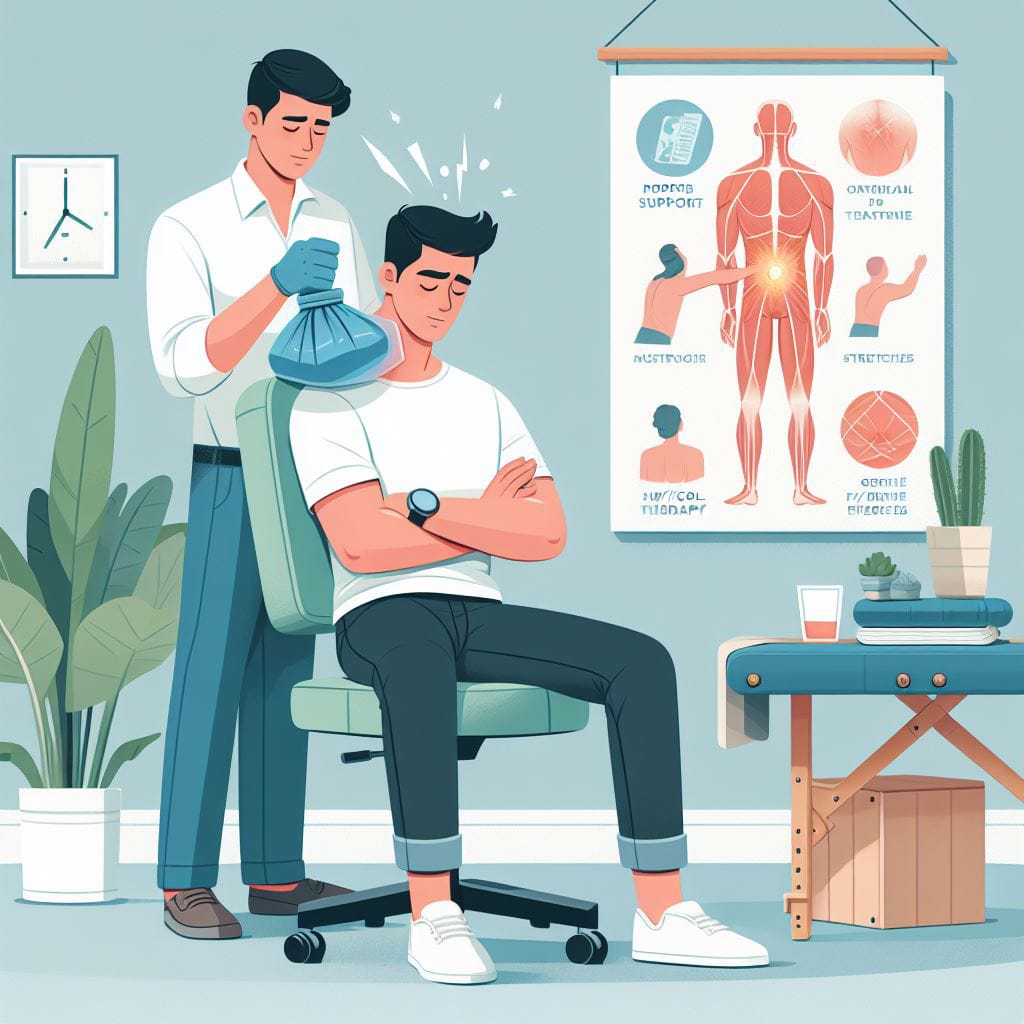Are you tired of being held back by the persistent ache in your lower back? If so, you’re not alone. Lower back pain affects millions of people worldwide, hindering daily activities and diminishing quality of life. But fear not, relief is within reach. This comprehensive guide delves into the myriad of lower back pain treatments and helps you regain control of your life. From conventional therapies to innovative techniques, we explore everything you need to know to find the most effective solution tailored to your needs.
Whether you’re a desk-bound professional, an avid athlete, or someone simply seeking respite from nagging discomfort, understanding the causes and treatments of lower back pain is crucial. So, sit back (or rather, stand tall!) as we embark on a journey to discover the strategies and therapies that can bring you the relief you deserve. Let’s banish that lower back pain and reclaim your vitality together.
Causes Of Lower Back Pain
Lower back pain can be a debilitating condition, often stemming from a variety of underlying factors. Understanding these causes is crucial in effectively managing and preventing further discomfort. Here are some common culprits:
1. Muscle Strain: Overexertion, improper lifting techniques, or sudden movements can strain the muscles and ligaments in the lower back, leading to pain and stiffness.
2. Poor Posture: Prolonged periods of sitting or standing with improper posture can put undue stress on the muscles and spine, resulting in chronic lower back pain.
3. Degenerative Conditions: Conditions such as osteoarthritis, spinal stenosis, and degenerative disc disease can cause gradual breakdown of the spine’s structures, leading to pain and reduced mobility.
4. Herniated Discs: When the soft inner core of a spinal disc protrudes through the tough outer layer, it can irritate nearby nerves, causing sharp, shooting pain in the lower back and legs.
5. Injuries: Traumatic incidents such as falls, car accidents, or sports injuries can cause fractures, sprains, or strains in the lower back, resulting in acute or chronic pain.
6. Sciatica: Compression or irritation of the sciatic nerve, often caused by a herniated disc or bone spur, can lead to radiating pain, numbness, and tingling sensations that extend from the lower back down the leg.
7. Lifestyle Factors: Obesity, lack of exercise, smoking, and poor dietary habits can contribute to lower back pain by weakening the muscles, compromising spinal alignment, and impairing overall health.
By identifying the specific cause or combination of factors contributing to your lower back pain, you can work with healthcare professionals to develop a targeted treatment plan that will address the root of the problem and restore your comfort and mobility.
Symptoms Of Lower Back Pain
Lower back pain can manifest in various ways, ranging from mild discomfort to severe incapacitation. Recognising the symptoms can aid in understanding the nature and severity of the condition. Here are some common signs and symptoms associated with lower back pain:
-
- Dull, Aching Pain
-
- Sharp, Stabbing Sensations
-
- Stiffness and Limited Mobility
-
- Muscle Spasms
-
- Numbness or Tingling
-
- Pain Aggravated by Certain Activities
-
- Pain Relief with Rest or Position Changes:
-
- Radiating Pain extending from the lower back into the buttocks, hips, thighs, or calves
-
- Difficult Sleeping
-
- Anxiety or frustration
If you experience any of these symptoms, especially if they persist or worsen over time, it’s essential to seek medical evaluation to determine the underlying cause of your lower back pain and explore appropriate treatment options for relief and recovery.
Read: 5 Non-Invasive Tests For Non-Alcoholic Fatty Liver Disease
Lower Back Pain Treatments
Finding relief from lower back pain is a top priority for those affected by this common and often debilitating condition. Fortunately, numerous treatment options are available to alleviate discomfort, improve mobility, and enhance overall quality of life. Here’s a comprehensive overview of effective lower back pain treatments:
Lower Back Pain Therapies

1. Physical Therapy For Lower Back Pain: Physical therapy focuses on improving strength, flexibility, and mobility in the muscles and joints surrounding the lower back. Therapists may use techniques such as stretching exercises, strengthening exercises, manual therapy, and modalities like heat or cold therapy to alleviate pain and improve function.
2. Chiropractic Care For Lower Back Pain: Chiropractors use spinal adjustments and manipulations to realign the spine, reduce nerve irritation, and restore proper movement in the lower back. This hands-on approach can help alleviate pain and improve spinal function for many individuals with lower back pain.
3. Massage Therapy For Lower Back Pain: Massage therapy involves kneading and manipulating the muscles and soft tissues of the lower back to reduce tension, improve circulation, and promote relaxation. Depending on the individual’s preferences and needs, different massage techniques, such as Swedish massage, deep tissue massage, or trigger point therapy, may be used.
4. Acupuncture For Lower Back Pain: Acupuncture involves inserting thin needles into specific points on the body to stimulate energy flow and promote healing. This traditional Chinese medicine technique has been shown to be effective in relieving lower back pain by reducing inflammation, releasing endorphins, and improving blood flow to the affected area.
5. Yoga and PilatesFor Lower Back Pain: Yoga and Pilates are mind-body exercises that focus on strengthening the core muscles, improving flexibility, and promoting proper alignment and posture. These gentle yet effective practices can help alleviate lower back pain by reducing muscle tension, improving spinal stability, and increasing overall body awareness.
6. Cognitive Behavioral Therapy (CBT) For Lower Back Pain: CBT is a type of psychotherapy that helps individuals identify and change negative thoughts and behaviours that contribute to their experience of pain. By addressing psychological factors such as stress, anxiety, and depression, CBT can help reduce the perception of pain and improve coping skills for managing lower back pain.
7. TENS Therapy For Lower Back Pain: Transcutaneous electrical nerve stimulation (TENS) therapy involves applying low-voltage electrical currents to the skin via electrodes placed on the lower back. This non-invasive technique can help alleviate pain by blocking pain signals to the brain and stimulating the release of endorphins, the body’s natural pain relievers.
Lower Back Pain Treatments At Home

1. Rest: While prolonged bed rest isn’t recommended, short periods of rest can help reduce acute pain and inflammation. Find a comfortable position that supports your lower back, such as lying on your back with a pillow under your knees, and avoid activities that exacerbate your symptoms.
2. Ice and Heat Therapy: Apply ice packs or cold compresses to the affected area for the first 48 hours to reduce inflammation and numb the area. Afterwards, switch to heat therapy with a heating pad or warm compress to relax muscles and increase blood flow, promoting healing and pain relief.
3. Over-the-Counter Medications: Non-prescription pain relievers such as ibuprofen (Advil, Motrin) or acetaminophen (Tylenol) can help alleviate mild to moderate lower back pain and reduce inflammation. Follow the recommended dosage instructions and consult with a healthcare professional if you have any concerns or medical conditions.
4. Gentle Exercise: Engage in low-impact exercises and stretches that strengthen the muscles supporting the lower back and improve flexibility. Consider activities such as walking, swimming, or yoga, focusing on gentle movements that don’t exacerbate your pain.
5. Proper Posture: Maintain good posture throughout the day, whether sitting, standing, or walking. Sit up straight with your shoulders back and avoid slouching or hunching over. Use ergonomic chairs and supportive cushions to provide adequate lumbar support and reduce strain on your lower back.
6. Ergonomic Adjustments: Make ergonomic modifications to your workspace, such as adjusting the height of your chair, desk, and computer monitor to promote proper alignment and reduce tension in your lower back. Use a supportive chair with lumbar support and take regular breaks to stretch and move around.
7. Sleep Support: Invest in a supportive mattress and pillows that promote proper spinal alignment and relieve pressure on your lower back. Experiment with different sleeping positions, such as sleeping on your side with a pillow between your knees, to find what feels most comfortable for you.
8. Maintain a Healthy Lifestyle: Eat a balanced diet rich in fruits, vegetables, lean proteins, and whole grains to support overall health and maintain a healthy weight. Stay hydrated, limit alcohol consumption, and avoid smoking, as these habits can contribute to inflammation and exacerbate lower back pain.
New Research About Lower Back Pain Treatments
Recent research on lower back pain has shed light on the complexity of diagnosing this condition, particularly in cases of non-specific lower back pain. Unlike some other medical conditions, there isn’t a specific diagnostic method for non-specific lower back pain, making it challenging for healthcare providers to pinpoint the exact cause.
However, studies have shown that approximately 80% of patients experience relief from their lower back pain within two weeks, indicating that, in many cases, the condition resolves on its own with time. The treatment methods for lower back pain are often simple and non-invasive, focusing on exercises and physical therapies aimed at strengthening the muscles supporting the spine and improving flexibility.
Read: Vitamin D Deficiency And Iron Deficiency Anemia In Children
Conclusion
Lower back pain can significantly impact daily life, but with a diverse array of therapeutic options available, relief is attainable. From conventional treatments like physical therapy and medications to alternative therapies such as chiropractic care and acupuncture, individuals have numerous avenues to explore for managing their symptoms effectively.
It’s essential to work closely with healthcare professionals to develop a comprehensive treatment plan that addresses the underlying causes of lower back pain and promotes long-term recovery. With dedication to self-care, lifestyle modifications, and proactive management strategies, individuals can reclaim their vitality and enjoy a life free from the constraints of lower back pain.
